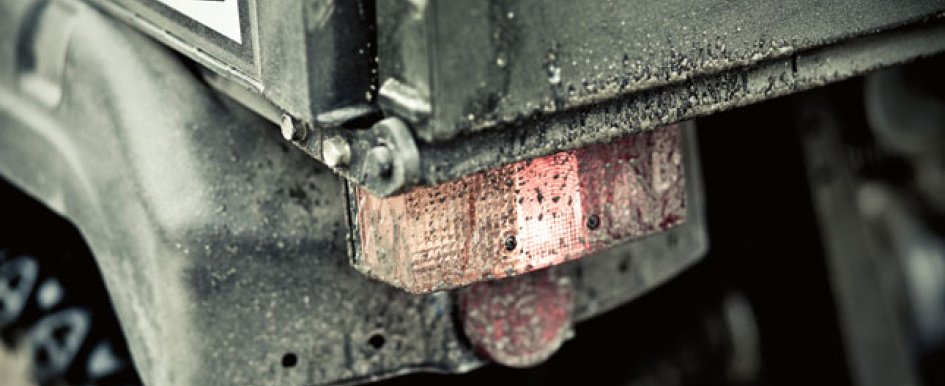
No two jobsites are alike. The crew size, scope of work and site environment differ on every job. But, no matter the construction project’s specifics, an emphasis on crew safety is a common thread. Even one minor incident can create long-term injuries and a huge financial burden.
Though often not the first consideration when it comes to equipment safety, utility vehicles (UTVs) are a driving force behind work on most project sites. Thus, maintaining a safe fleet of UTVs and ensuring the crew uses them correctly is paramount to jobsite safety.
Best Practices Properly loading a utility vehicle is the most important way to ensure the operator and all passengers remain safe in transit on a worksite. This also helps prevent damage to the vehicle. However, proper loading practices are often overlooked, leading to dangerous conditions for the crew and vehicle.
Properly loading a utility vehicle is the most important way to ensure the operator and all passengers remain safe in transit on a worksite. This also helps prevent damage to the vehicle. However, proper loading practices are often overlooked, leading to dangerous conditions for the crew and vehicle.
A common oversight occurs when operators do not account for the weight of the passengers in addition to the vehicle’s cargo when calculating the payload weight. So, a vehicle with a 1,500-pound payload capacity often gets filled with 1,500 pounds of material in the bed before the two passengers sit down in the cab. This can leave the UTV operating with a payload of 500 pounds above the recommended maximum.
Overloading can be costly on the vehicle, too. An overloaded vehicle puts too much pressure on the UTV’s suspension and can cause it to bottom out when in transit. This can break the axles and possibly eject the passengers in the process.
The solution is a matter of awareness. Too often, a crew shows up on a jobsite and is given the seemingly mundane task of transporting a large amount of material from one location to another. Because UTVs don’t have indicators on the body of the vehicle specifying the maximum weight capacity, the crew simply fills the bed with material until they see the suspension flex. In these cases, the vehicle is likely over its recommended capacity even before the two crewmen sit in the cab, adding their own weight to an already-stressed UTV.
Clamping down on distractions among UTV operators, especially the use of cell phones and two-way radios while driving, is an important safety-prevention measure. It takes only a moment of distraction while checking a communication device to overlook a pothole or passerby.
Before establishing the safe use of UTVs, however, it is critical to ensure that the vehicles are in safe working order. A walk-around inspection of the vehicles every morning before work begins seems like an obvious precaution, but the process can easily be overlooked. Catching a problem before the vehicle is put into use for the day is well worth the five minutes a daily inspection takes. Look for a clean windshield, make sure the dump bed is working properly and check the tires. Also be sure to clear the vehicle’s lighting of debris and dirt that may have accumulated from the previous day.
Accessories and Upgrades
Adding accessories designed with safety in mind helps to ensure a safer working environment. UTV manufacturers offer an array of accessories and attachments designed to keep crews safe while on the job.
Accessories that alert others that a UTV is in operation nearby, such as taillights, brake lights, reverse alarms and strobe lights, are simple features that can be added for a nominal cost. They are especially worthwhile in the morning fog and at worksites with tall grass that might shield a vehicle from plain view. Quiet-running electric UTVs, often chosen over gas-powered vehicles for construction sites that require emissions or noise reductions, can benefit greatly from these additional lights.
A rollover protection system (ROPS) in conjunction with seatbelt use helps prevent passengers from being injured in the event of a rollover. Similarly, an occupant protection system (OPS) protects passengers in the utility vehicle from being injured when a vehicle tips over, and a falling object protection system (FOPS) prevents falling objects from injuring passengers. Most utility vehicles rolling off manufacturing lines are not FOPS certified, so it can be a smart upgrade to make for vehicles that will work on large construction sites.
A full-cabin enclosure to a utility vehicle keeps passengers safe by ensuring that their arms and legs do not hang out of the cabin if the vehicle tips or rolls. In the event that the UTV starts to tip, it is instinctive for a passenger to put an arm or leg out of the cabin to brace. This is an easy way for injury to occur. A full enclosure also prevents crewmen from reaching out of the cabin to pick up equipment on the ground while the vehicle is moving. If that equipment is anchored to the ground, the passenger can easily dislocate a shoulder or be pulled from the vehicle.
A limited-slip differential is an additional feature offered on some UTVs. This feature shortens the vehicle’s stopping distance to help avoid accidents.
A UTV fleet is an instrumental part of every construction jobsite, but these vehicles should be used with care, for the safety of the operator and everyone working in close proximity. Adding affordable safety accessories to a UTV fleet and managing the crew to operate the vehicles safely will help reduce accidents on any construction site.
